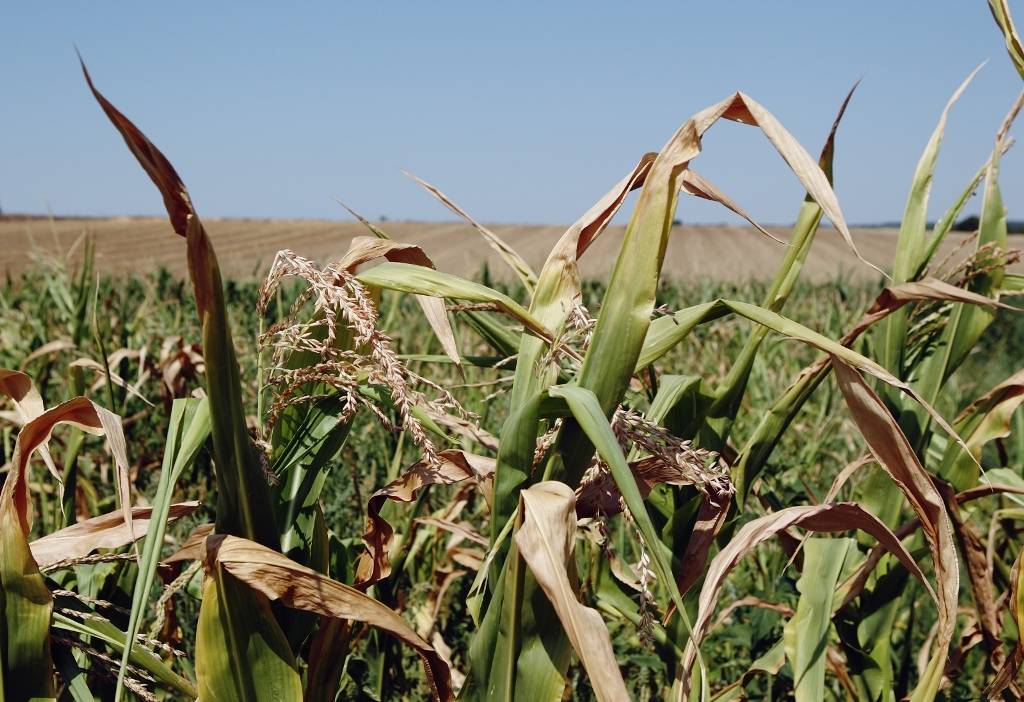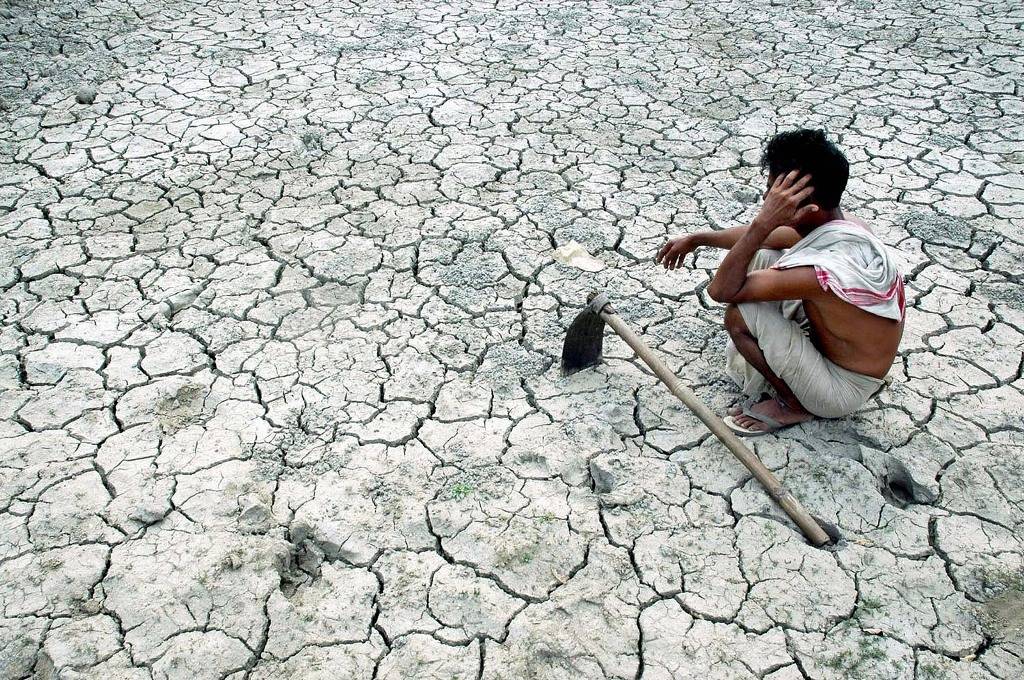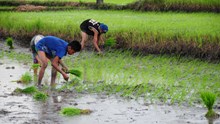
Climate Change in India has always been about increase in temperatures, rise in sea level and burning of fossil fuels but seldom do we discuss its impact on the Agricultural sector, which employs more than 10 percent of the nation's population.
The rise in global warming is expected to hit the sector hard but what impacts will it have and what does the future hold for us?
Dr. Soumyajit Bhar is a faculty member at Terra.do who is currently teaching on the flagship course, Climate Change: Learning for Action. He is also currently working as a Visiting Assistant Professor with Krea University and Statistical Consultant with Gradright shares his views about the growing impact of climate change on Indian agriculture.
As climate change in Indian is impacting rainfall and temperature, what are its effects on agricultural productivity?
Unprecedented changes in the water cycle and soil loss are some of the adverse effects of climate change that are going to impact the agricultural sector the most. Climate change is affecting and will affect even more severely the availability of soil moisture, the rate of groundwater recharge, and frequency of flood or drought, and eventually, the groundwater level in different areas. Higher temperatures and changing precipitation patterns will adversely impact the production patterns of different crops. Climate change also increases the vulnerability of crops to pests and diseases. In addition, the predicted rise in sea level will increase the risk of permanent or seasonal saline intrusion into groundwater and rivers, which would deteriorate the quality of water. There is also a probability that agricultural productivity will reduce due to increased carbon dioxide concentration in the atmosphere.
The southwest monsoon is critical to the Kharif crops, which account for more than 50% of the food-grain production and 65% of the oilseeds production in the country. The interannual monsoon rainfall variability in India leads to large-scale droughts and floods, resulting in a major impact on Indian food grain production, particularly in Kharif season (Mall et al. 2006; published in Climatic Change). A rise in temperature may lead to a decrease in yields of leguminous crops by 3–7 %, as per the recent research results (Banerjee 2014, published in Natural Hazards). 2014 found a decline in paddy yield by about 411–859 kg/ha was due to a rise in temperature (1 °C). The winter or ‘rabi’ crop-growing season starts after the summer monsoon and continues through to the following spring or early summer. Rainfall occurring at the end of the monsoon season provides stored soil moisture and often irrigation water for the rabi crop, which is shown in the post-monsoon season (October–November). The summer monsoon, therefore, is responsible for both Kharif and rabi crop production in India. As found by Kuman and Gautam (2014) [published in Journal of Climatology and Weather Forecasting] increasing heat waves, the drought situation negatively impacted this production to a great extent. In summary, frequency and intensity of inter- and intra-seasonal droughts and floods, soil organic matter transformations, soil erosion, change in pest profiles, a decline in arable areas due to submergence of coastal lands are the pathways through which climate change is going to adversely impact Indian agriculture. All these can have a tremendous spiraling impact on agricultural production.
Climate change is leading to irregular droughts and floods, is the agricultural infrastructure in the country equipped to deal with this situation?
Farmers in India to date are not taking concrete steps in dealing with perceived climatic changes, although we find that farmers are changing their agricultural and farming practices. These included changing sowing and harvesting timing, cultivating crops and varieties of shorter duration, inter-cropping, changing cropping patterns, investment in irrigation, and agroforestry. Perhaps farmers are implicitly taking initiatives to adapt to climate change. The National Mission for Sustainable Agriculture is a govt initiative to support climate adaptation in agriculture through the development of climate-resilient crops, the expansion of weather insurance mechanisms, and innovative agricultural practices (Tripathi and Mishra 2017; published in Climate Risk Management). These include improved crop seeds, livestock, and fish culture; water use efficiency; pest management; improved farm practices; nutrient management; agriculture insurance; credit support; markets; access to information; and livelihood diversification strategies. In its budget (2014–15), the GoI proposed an adaptation fund of Rs. 100 crores3 (GoI, 2014). Additionally, in India, two other programs—agro-meteorology advisory service and farmers’ awareness program—have been launched; these seem to have the potential to be scaled-up as sustainable agriculture programs (Tripathi and Mishra 2017; published in Climate Risk Management).
However, at the ground level, there is a great demand for systematic implementation of appropriate techniques. Increase in the diversity of crops to become more resilient, for example, millet farming instead of only rice cultivation. Usage of Water-efficient technology, drip irrigation and reviving traditional water harvesting mechanisms, and a special focus on coastal areas to cope with cyclone, flood, and seawater invasion are some of the concrete steps that can be implemented in this regard. There are sporadic examples of small-scale appropriate farming techniques successfully implemented to cope with these kinds of disasters that need to spread widely.

Practices like shifting agriculture and stubble burning act as a catalyst to the already rising global warming. What steps can be taken to mitigate it?
Before delving further into the links between these two practices and rising global warming, let me clarify even when both these practices involve large amounts of biomass burning, the socio-cultural as well as environmental contexts for both are largely different.
Although there seems to be an obvious link between shifting agriculture to climate change, it would be too reductionist to conclude that these practices need to be banned entirely. First of all, studies found these practices are not merely alternative methods of farming but a form of landscape management that has not only evolved over centuries of experimentation and is also inseparable from the culture and the way of life of those who continue to practice these (Dewani 2014; published in India Water Portal). Even more important, contrary to the popular notion held by state officials and other agencies, these practices provide a sustainable means of livelihood and food security to the indigenous people (Cairns 2017; published in Shifting Cultivation Policies Balancing Environmental and Social Sustainability). Second, the section of the population dependent on these practices, mostly the indigenous people, generally have a low consumption carbon footprint and thus how far it is justified to expect them to change their traditional practices on the ground that such a change will help mitigate climate change (Cairns 2017; published in Shifting Cultivation Policies Balancing Environmental and Social Sustainability). Third, these practices, as indicated, are there for centuries, and thus, if the total areas under these practices are kept within check, the marginal contribution from these practices to the spike in global CO2 concentration that has been reported in the last century cannot potentially be very high. Fourth, as there is constant forest regeneration also happening as part of these practices, a substantial amount of CO2 gets sequestered in the soil, which obviously helps in mitigating climate change. In spite of these rationales against concluding shifting agriculture is environmentally impactful, we need to remember that these practices are largely sustainable when it is practiced for meeting subsistence needs. However, when these practices are directed towards meeting market demands, and the per-capita land availability falls drastically due to a sharp rise in the population, the above rationales do not remain tenable anymore.
In contrast to shifting agriculture, stubble burning (burning the residual plants after the harvest in the field itself) contributes to global warming and more to local air pollution (Delhi is a classic example of the same) (See Singh et al. 2021; published in SSM-Population Health). Scholars opine that stubble burning can very well be managed alternatively, and this practice is a result of wrongly placed economic incentives in the first place (Kumar et al. 2014; published in Socioeconomic and Environmental Implications of Agricultural Residue Burning). For example, if rice is replaced or augmented with other millets in the public distribution system, then it not only save a huge amount of freshwater that goes into paddy cultivation but it will also saves the methane that gets emitted from the growth of anaerobic bacteria in inundated paddy fields. Moreover, millets are found to be more nutritious and balanced food.
Are the Indian farmers aware of climate change and how it is affecting his crop?
The major perceived change reported in terms of rainfall pattern changes and delayed onset of monsoon, and temperature rise (Banerjee 2014, published in Natural Hazards) (Singh 2020; published in Ecological Indicators). Climate variability was perceived as presenting a risk to the farming communities amid concerns that income through agriculture had drastically reduced. The observed impacts are in terms of the increase in pests and diseases due to uncertainty in rainfall and climate along with loss of yields. Rain during the harvest time results in huge losses. The availability of water for household and drinking purposes and rearing livestock in poorly connected villages are reducing rapidly (Banerjee 2014, published in Natural Hazards). As per farmers, check-dams are found to be a cost-effective and efficient way to manage water stress as compared to field ponds. Short-duration crops like vegetables are becoming alternative choices for many farmers (Tripathi and Mishra 2017; published in Climate Risk Management). Potential water shortage has led the farming community to explore water-effective technologies, one of the ways being shifting to short-duration crops as well as techniques like shed-nets (Singh 2020; published in Ecological Indicators). There is a further need for understanding the process of local adaptation and innovation based on the perceptions of the farmers on climate change.
In addition, government policies should work on schemes that enhance farmers’ access to affordable credit, along with issuing land entitlements to women to be better aligned with national plans on climate change adaptation. In this regard, it is found that insurance and credit are the main positive determinants that motivated farmers to adjust farm practices to cope with climate change (Singh 2020; published in Ecological Indicators).















